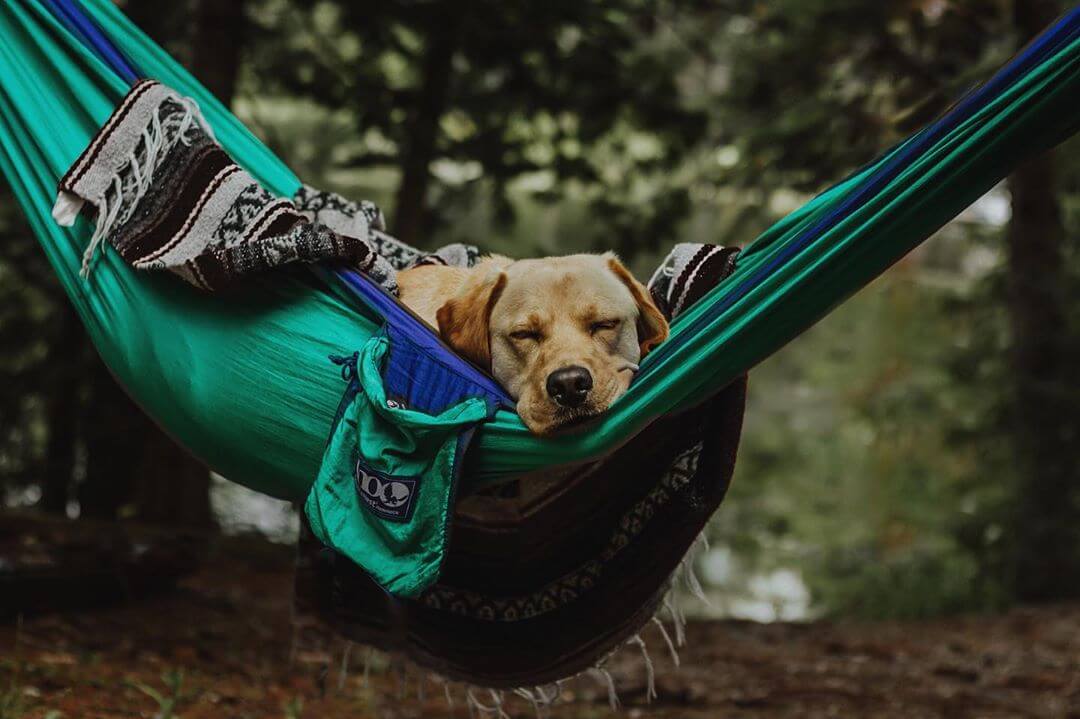Written by Samarth Vasisht
Anyone who has a dog understands the struggles that come along with taking a vacation. Finding a friend to watch over your dog or resorting to a kennel is never an easy or fun process to go through. Enjoying the outdoors with your dog is an easy and fun way to take a vacation and still enjoy the company of your canine companion.

Before going out on a backpacking trip, be sure to understand how your dog will handle the physicality of hiking as well as interaction with others on the trail. Take time to research the area that you plan to hike and see if they have any restrictions on pets (you can check out sources like BringFido.com for dog-friendly campgrounds and trails). Some areas don’t allow pets at all, others require a leash, and some have no restrictions at all.
If you do need a leash, think about getting something sturdier like the reLeash that will stand up to the conditions that you face outdoors. A thin extendable leash might work around the park, but it’s much nicer to have something stronger for when you’re hiking around the forest.
Understand the personality of your dog and think about how he/she will react around other people. If you have an older or very excitable dog, think about leaving them at home, but as long as you and your dog are respectful and friendly, you’ll be sure to have a great time. Try to pick a trail that your dog will be comfortable with and will be able to handle physically. If you have a smaller dog, try and pick a shorter, smaller trail. Larger dogs can usually handle much longer trails and are often very good at climbing inclines and handling challenging terrain.
Getting a pack for your pet is an easy way to distribute the load of food and water so that your dog gets enough nutrition to stay healthy during the trip without overloading your own pack. When packing food, try to pack about double of what you would feed your dog on a normal day. Additionally, be sure to filter water sources in the same way that you would for yourself when providing water for your dog. Try to keep pack weight around 20% or less of your dogs’ weight, although this definitely varies from breed to breed.
Keeping your dog warm while they sleep is also an important consideration to think about when going hiking. If the temperature is going to dip below a comfortable range, be sure to bring a separate pad and maybe a children’s sleeping bag for your furry pal to stay warm in.
Before your dog goes to sleep, it’s a good idea to dry him/her off with a towel and give their coat a wipe down with a biodegradable wet wipe. This ensures that they won’t sleep cold and wet and won’t get anything too dirty inside your shelter.
Finally, if you plan on traveling with your dog in rocky or snowy environments, think about buying a pair of dog boots so that your dog can comfortably walk on the cold/rough ground. These little booties can help reduce injury and help let your dog have a great time in the outdoors!

When traveling with your pet, remember to treat their waste like your own and bury it well away from water sources. Also it’s important to understand how to treat injuries in the backcountry. I personally suggest either taking a class or finding a book on veterinary first aid!
Exploring the backcountry with your furry friend is an easy and fun way to turn a weekend into a vacation. If you’re thinking about solo backpacking, a great way to start is to travel with your pet. Dogs provide companionship on the trail, and hiking provides great exercise for both you and your dog.





Share:
How to Get Drinkable Water Almost Anywhere
5 Tips for Staying Warm While Winter Backpacking/Camping